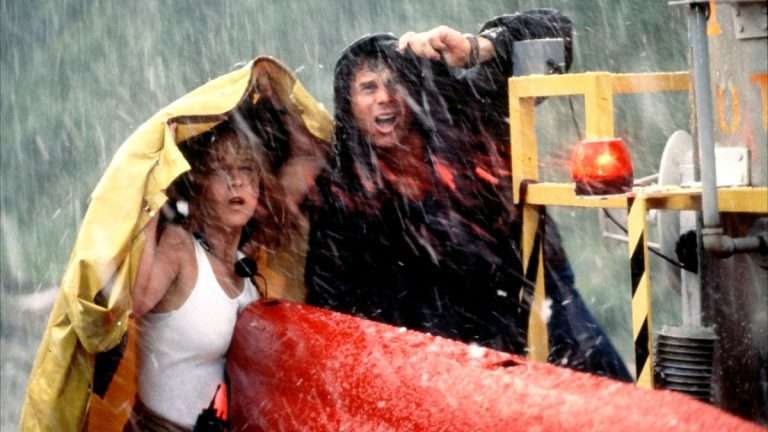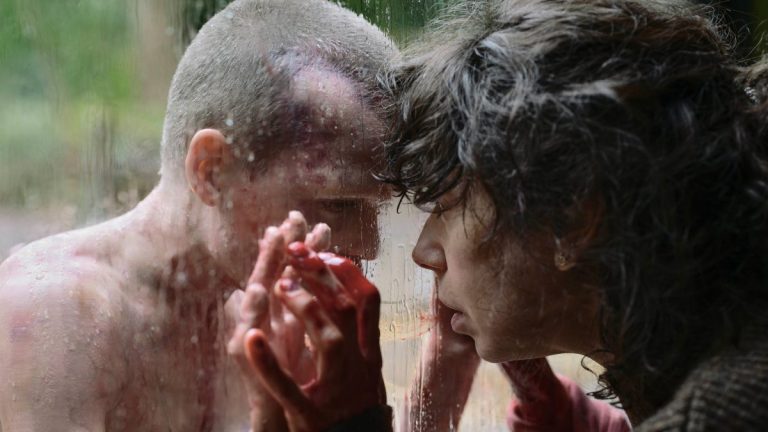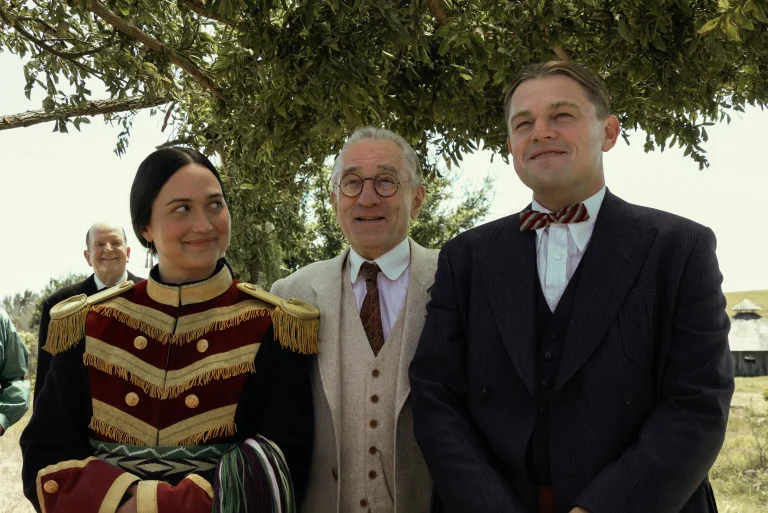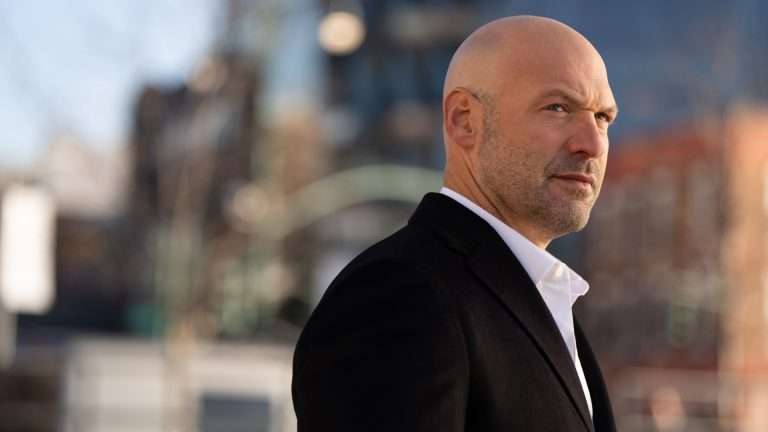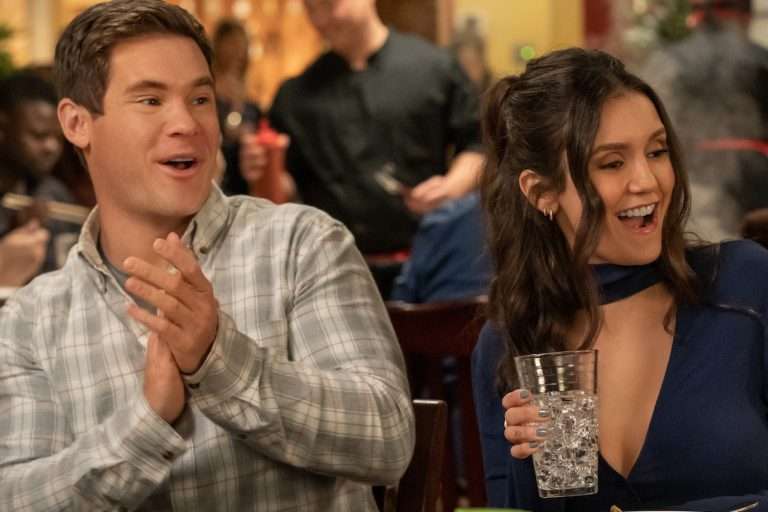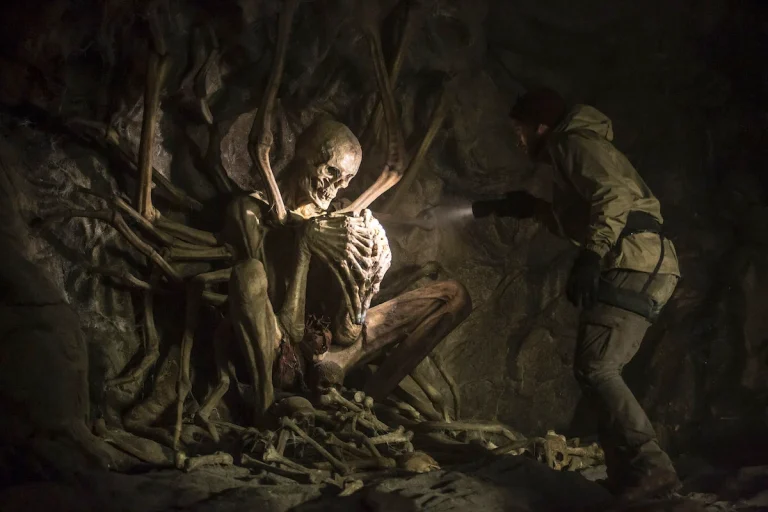Directed by Robert Zemeckis, “Back To The Future” (1985) is celebrating its 40th anniversary this year, remaining one of the biggest blockbusters of 1980s American cinema. Its immense popularity led to two more sequels and even live musicals that continue to attract audiences in the 21st century. While many science fiction films have explored time travel, the tantalizing ideas of confronting the past, changing history to fix the present, and the resulting uncertainty about the future have always fascinated not just sci-fi geeks but the general audience as well.
More than being just a science fiction film, “Back To The Future” (1985) created a template for many mainstream entertaining films that blend family, satire, and drama. Like the works of Lucas, Spielberg, and Cameron, most of Zemeckis’ films are widely seen and appreciated, cementing his place among the great filmmakers of his time.
Back To The Future (1985) Plot Summary and Movie Synopsis:
Marty McFly (played by Michael J. Fox), a vibrant teenager from the eighties, is ambitious to become a guitarist, living in an ordinary neighbourhood. He is friends with an old scientist Doctor Emmet Brown (played by Christopher Lloyd). One day, the Doctor asks Marty to meet him at a parking lot of Twin Pines Mall early morning at 1:15.
While the Doctor shows his invention to Marty, he is accidentally sent back in time to November 5, 1955. Marty, who had never time-traveled before, meets the younger version of his parents, which leads to questions about his own future and even his existence. How Marty fixed his time travel machine without any prior scientific knowledge and without the old Doctor Brown, who invented the machine, and how Marty fixed the grandfather paradox form the crux of “Back to the Future” (1985).
Back To The Future is a pop-culture Icon!
Anyone who’s seen “Avengers: Endgame” (2019) will remember the scene where Ant-Man jokes about the “Back to the Future” (1985) time travel logic. In “Endgame” (2019), Ant-Man openly questions the logic behind Back to the Future’s version of time travel, highlighting how its approach has become a pop-culture touchstone. Regardless of any sort of concept that shows time travel is possible in films, paradoxes are indeed part of that idea, which cannot be put aside. Any alteration in the past will have consequences in the present and future, as real scientists say.
Why did Marty worry about the grandfather paradox?
At present, that is 1985, Marty’s father, George McFly, is depicted as timid, gullible, and constantly bullied. When George first met Lorraine, Marty’s mother, in 1955, she felt sorry for him, almost like she was rescuing a lost puppy, and eventually fell in love with him. Over the years, George never really changed; people continued to take advantage of him, and he rarely stood up for himself or his family. This distanced Lorraine from George at Present.
However, when Marty is accidentally sent back to 1955, his mother becomes infatuated with him instead of his father. While this scenario is even more awkward when viewed today, it’s still undeniably funny. The problem is, this twist in the past puts Marty’s own existence at risk—if Lorraine doesn’t fall in love with George in 1955, they’ll never get married, and Marty McFly might never be born at all. If there were no Marty in 1985, he would have never travelled back to 1955, and the whole time travel would not have even existed. This is even more complex for the scientists of our day to explain.
Marty was scarred about this paradox and, with the help of younger Doctor Brown, tried to be a wingman for his father to set him up with his mother. His every attempt grew more passion in Lorraine for Marty, not for George. Marty is not just trapped in the past, but between his parents’ marriage.
How is time travel possible in ‘Back to the Future’?
While real-world time travel remains firmly in the realm of science fiction, filmmakers have long found inventive ways to bring it to life on screen. The very existence of a film like Back to the Future (1985) — made at a time when most people hadn’t even heard of email — is remarkable. Even if modern science and newer films equipped with advanced technology have poked fun at its logic, its charm and ingenuity still endure.
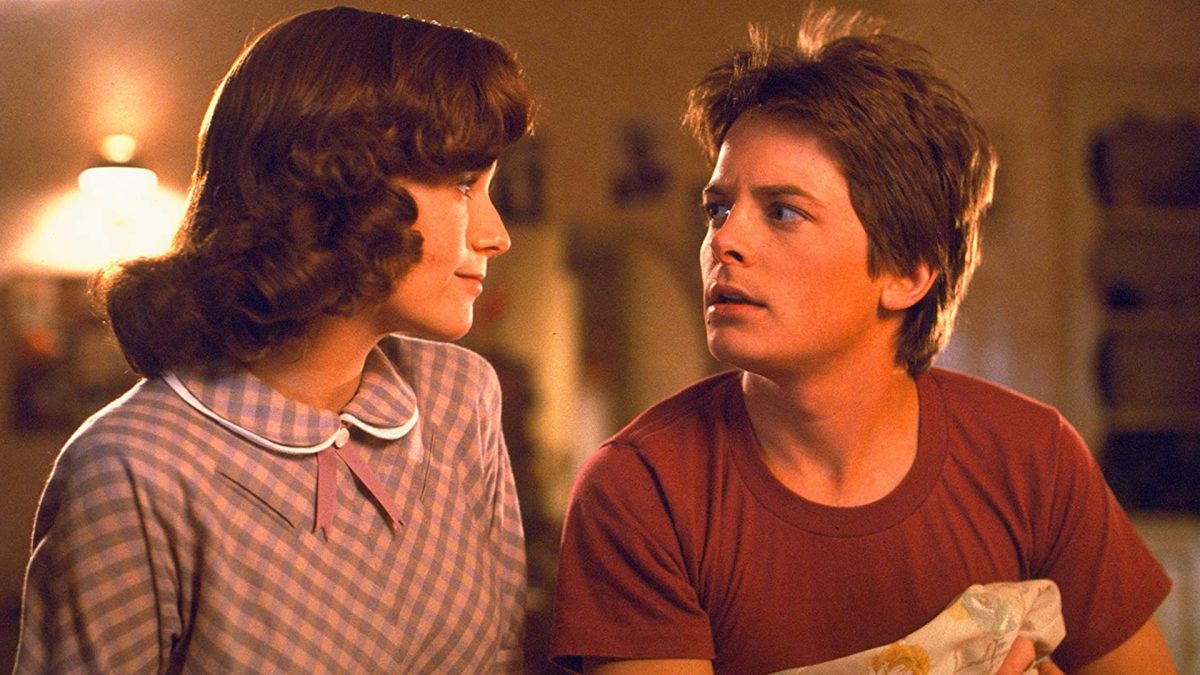
Doctor Brown invented the iconic flux capacitor; according to him, it is the true heart of his time-traveling DeLorean. It isn’t the car or even Marty himself that makes time travel possible; it’s this imaginative device. To power the flux capacitor, Doctor Brown needed plutonium, an impossibly rare and dangerous element, especially in 1985. If Doctor had access to plutonium back in 1955, he could have built the machine years earlier, and Marty’s adventure might never have happened! And one has to speed the DeLorean at 88 mph to travel through time.
Even in 1985, Doctor Brown resorted to smuggling plutonium from Libyan terrorists who were desperate for a nuclear weapon. This outlandish constraint is cleverly resolved by the film’s end, when Doctor upgraded the DeLorean that later flies with garbage banana peels and empty soda cans, showing once again how creative solutions can fuel even the wildest dreams of that era.
Back To The Future (1985) Movie Ending Explained:
Before Marty accidentally traveled to 1955, he witnessed Dr. Brown being shot in the parking lot and falling to the ground. Marty assumed that Doctor Brown was dead. Desperate to escape the shooting, Marty jumped into the car and sped away, not realizing he’d reached 88 mph, thus triggering the time travel to 1955. Believing the Doctor was dead in 1985, Marty tried multiple times to warn the younger Doctor Brown in 1955 about his future fate. But the younger Doctor Brown refused to listen, worried about the consequences of a time paradox.
Also Read: Back to the Future (1985) Movie Review
Because Marty deeply cared about the Doctor, he couldn’t just leave without trying to help. He wrote a letter addressed “Do not open until 1985.” Doctor Brown found the letter before Marty left 1955 but initially refused to read it, fearing the dangers of knowing his own future. Marty left 1955 with disappointment, but he held on to hope that if he made it back to 1985, a few minutes prior to the shooting, he might still save Doctor Brown—even if the younger Doc wouldn’t cooperate.
Present changed, but in favour of Marty
Marty successfully used the lightning strike to recharge the flux capacitor and time-travel back to his present. As soon as he arrived in 1985, he rushed to save Doctor Brown. But he was a few seconds late; the shooting had already happened. While Marty mourned over the Doctor, he suddenly woke up, revealing that he had survived. It turned out Doctor had eventually read Marty’s letter from 1955 and came prepared, wearing a bulletproof vest to protect himself. Relieved, Marty wakes up the next day in his own house, only to realize his present has dramatically changed. By interfering with the past, Marty altered the way his parents met, creating a new timeline.
The night when George and Lorraine actually met, before Marty’s trip to 1955, would have played out differently. Lorraine had mentioned at the start of the film that her first kiss with George happened during the “Enchantment Under the Sea” dance night. Marty tries to ensure the same outcome, but Biff and his gang hijack their plan. For the first time in his life, George stands up for Lorraine, punching Biff and rescuing her. After that, George and Lorraine share their first kiss.
Marty, believing his parents’ kiss would guarantee they’d end up together, didn’t realize he’d made a significant change in his father’s character. This act made George bolder and more creative. Marty’s present is now more luxurious—his dad is a famous author, not a timid middle-aged man, and his parents are much more in love, not a disconnected couple. Even Marty’s dream of owning a fancy car has become a reality.
Marty Escaped the Past, but the Time Travel Continues!
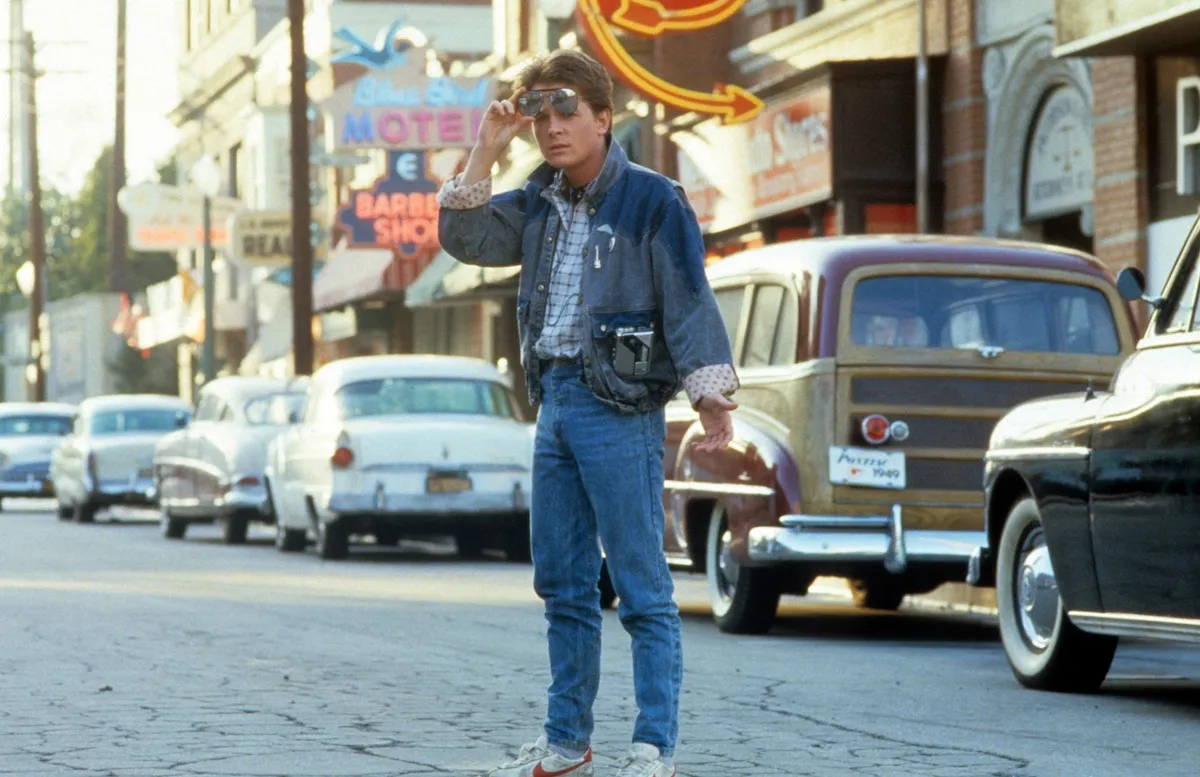
But just as Marty begins to enjoy his new life, Doctor Brown—now from the future, not the past- arrives and asks for Marty’s help to travel “Back to the Future,” setting up the sequel and closing out this classic first instalment.
Back To The Future (1985) Movie Themes Analysed:
The Heart of Back to the Future: Courage and Moral Complexity
While “Back to the Future” dazzles with its science fiction, its real story is about Marty, his family, and the courage to change your destiny. George McFly’s transformation—from a timid, bullied young man into a confident, successful author is more than just wish fulfilment; it’s a testament to the power of standing up for oneself. For George, that catalyst is Marty. Sometimes, it takes someone else to spark the confidence we can’t find in ourselves.
But Marty, too, learns a lesson about family. At first, he’s wrapped up in his own dreams and frustrations, but when he realizes that his own existence and his family’s happiness depend on encouraging his father, he steps up. It’s not just about saving himself; it’s about standing up for the people he loves. The deep, intergenerational bond between Marty and Dr. Brown is also worth noting. The film reminds us that friendship and mentorship can cross age boundaries, and that supporting one another can make all the difference.
A Question of Morality: Humour, Awkwardness and Perverseness
That said, some elements of “Back to the Future” (1985) land differently today. The subplot where Marty’s mother, Lorraine, develops a crush on him is played for laughs, but it undeniably introduces an awkward, even uncomfortable, undertone. Likewise, young George’s voyeurism, peeping at Lorraine, is a plot device meant to highlight his awkwardness, but by today’s standards, it is problematic.
In recent years, some of Zemeckis’ works (including “Forrest Gump”) have faced renewed scrutiny online. While Back to the Future remains iconic, these moments of “comedic perverseness” might ignite a debate over what passed for acceptable family entertainment in the 1980s. The film still delivers its laughs, but it’s fair to acknowledge that some of its humour comes at the expense of boundaries that might feel uncomfortable to modern viewers.
Not just the sexual tension between young Lorraine, who is the mother of Marty and Marty himself, but Marty plans to harass his own mother! Sure, one kiss is enough to make young Lorraine lose her feelings for Marty — but Marty has to live with that memory for the rest of his life, both in the present and the future. It’s not just his mother’s “perverseness” he has to grapple with, but also young George’s behavior, which is clearly perverse too. Here’s a fragile young man who supposedly needs external motivation just to stand up for himself — yet he somehow has the nerve to climb a tree to spy on someone undressing!
Ultimately, these aspects complicate our nostalgia for the film. They invite us to reflect—not just on the history the movie rewrites, but also on the cultural values of the era and how our standards have changed over time. Many films include scenes and subplots that touch on themes of vulnerability, harassment, or problematic behaviour, but when they’re played for laughs, though it is subjective, it still leaves room for debate on the humour.
Overall, “Back To The Future” (1985) endures as a beloved classic, quirks, awkwardness, and all, even as its subtle perverseness feels more noticeable through a modern lens.



